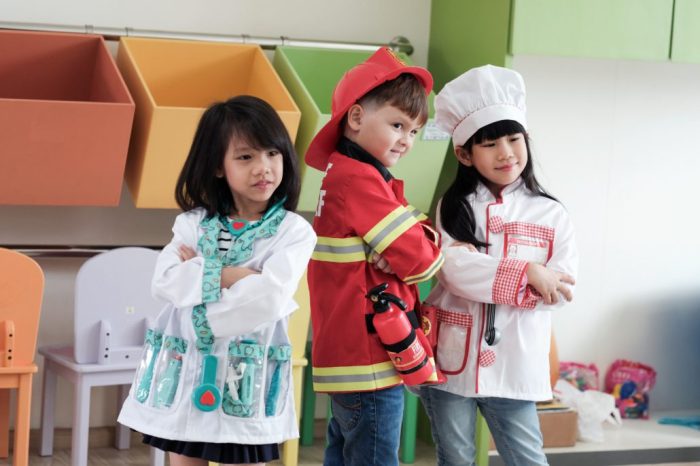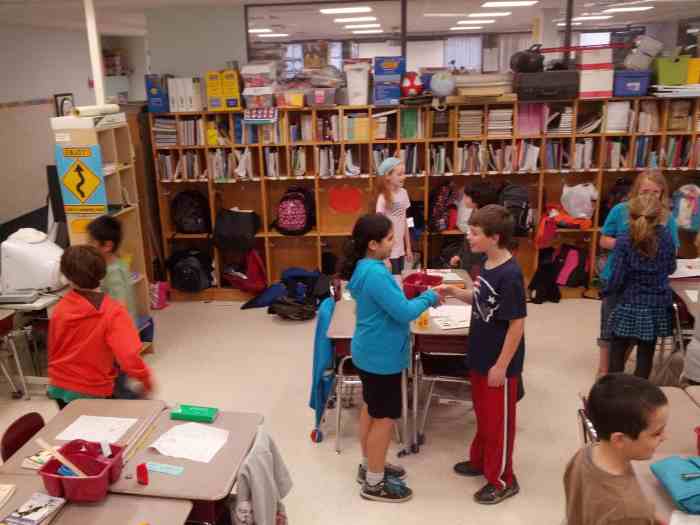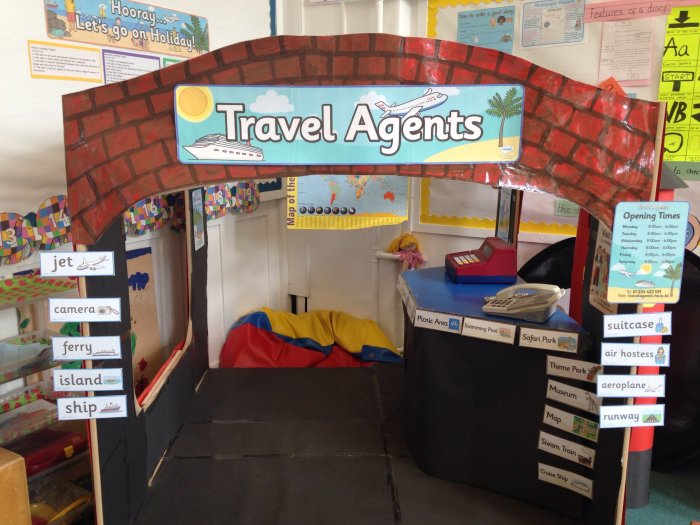Role play ideas can transport you to realms where your imagination takes center stage. Dive into diverse scenarios, craft captivating characters, and experience the transformative power of storytelling.
From educational adventures to therapeutic breakthroughs, the possibilities are endless. Let’s explore the boundless world of role play ideas and unlock the magic within.
Role Play Scenarios
Role play is an engaging and effective technique used in various settings, including education, therapy, and training. It allows individuals to step into different roles and explore diverse perspectives, fostering empathy, critical thinking, and communication skills.Role play scenarios can be tailored to suit specific objectives, interests, and group dynamics.
Here are a few examples:
Conflict Resolution
Conflict resolution scenarios focus on managing interpersonal conflicts in a constructive and effective manner. Participants learn to identify and understand different conflict styles, develop active listening and empathy skills, and practice negotiating and compromising to reach mutually acceptable solutions.
Historical Events
Historical event scenarios immerse participants in the context and perspectives of significant historical events. They can explore the motivations and actions of historical figures, understand the complexities of social and political issues, and develop a deeper appreciation for the past.
Social Issues
Social issue scenarios tackle contemporary social problems such as discrimination, poverty, or environmental degradation. They encourage participants to examine these issues from multiple viewpoints, develop empathy for marginalized groups, and consider potential solutions and advocacy strategies.
Therapeutic Role Play
Therapeutic role play is used in therapy to help individuals explore personal issues, practice coping mechanisms, and develop healthier behaviors. It can be particularly beneficial for addressing anxiety, trauma, and relationship challenges.
Adapting Scenarios
When adapting scenarios to different age groups, skill levels, or cultural backgrounds, consider the following:
-
-*Age
Adjust the complexity and length of scenarios to suit the developmental level of participants.
-*Skill Level
Start with simpler scenarios and gradually introduce more challenging ones as skills develop.
-*Cultural Background
Incorporate cultural nuances and perspectives into scenarios to ensure relevance and cultural sensitivity.
Character Development
Crafting compelling characters is the cornerstone of engaging role-play. Immersive characters resonate with players, driving the narrative and fostering an unforgettable experience.
Character development encompasses three key pillars: backstory, motivations, and conflicts.
Backstory
A rich backstory provides the foundation for a character’s identity, shaping their beliefs, values, and personality. Consider:
- Childhood experiences and family dynamics
- Formative events and pivotal moments
- Traumas, losses, and triumphs
Motivations
Motivations drive characters’ actions and decisions. Understand their:
- Goals and aspirations
- Fears and insecurities
- Moral compass and ethical dilemmas
Conflicts
Conflicts add depth and complexity to characters. They can be:
- Internal struggles (e.g., guilt, self-doubt)
- External obstacles (e.g., adversaries, environmental challenges)
- Moral dilemmas (e.g., choosing between right and wrong)
Setting and Atmosphere: Role Play Ideas

Setting is the foundation of any immersive role play experience. It provides the context for the characters’ actions, shapes their interactions, and evokes emotions that drive the narrative forward.
Sensory Details
Sensory details are essential for creating a vivid and believable setting. Describe the sights, sounds, smells, tastes, and textures that define the environment. These details can transport players into the world and enhance their connection to the characters and story.
- The acrid smell of smoke hung in the air, choking the senses and creating a sense of foreboding.
- The rhythmic beat of drums echoed through the dense jungle, signaling the approach of a hidden tribe.
Cultural Influences
Cultural influences shape the customs, beliefs, and values of a society. Incorporating these influences into the setting adds depth and authenticity to the role play. Consider the architecture, fashion, language, and social norms of the environment.
- The vibrant colors and intricate patterns of the ancient temple reflected the rich cultural heritage of the region.
- The strict social hierarchy of the kingdom dictated the interactions between different classes, creating tension and conflict.
Historical Context
Historical context provides a backdrop for the events of the role play. Understanding the history of the setting can inform character motivations, plot twists, and the overall atmosphere. Research historical events, cultural movements, and technological advancements to create a believable and engaging world.
- The scars of war were still visible in the crumbling ruins and displaced communities, casting a shadow over the present.
- The rise of a new scientific discovery had revolutionized the society, creating both opportunities and threats.
Plot Structure and Conflict

Creating an engaging and satisfying role play plot is an art form. It requires careful planning and execution to ensure that the players are engaged, the story flows smoothly, and the resolution is satisfying.
One of the most important elements of a good plot is conflict. Conflict is what drives the story forward and creates tension and excitement. Without conflict, the plot would be flat and boring.
Types of Conflict
There are many different types of conflict that can be used in a role play. Some of the most common include:
- Internal conflict:This is a conflict that occurs within a character’s mind. The character may be struggling with a moral dilemma, trying to overcome a fear, or dealing with a personal crisis.
- External conflict:This is a conflict that occurs between two or more characters. The characters may be fighting over a resource, trying to achieve different goals, or simply disagreeing with each other.
- Environmental conflict:This is a conflict that occurs between a character and their environment. The character may be trying to survive in a hostile environment, overcome a natural disaster, or deal with the effects of pollution.
The type of conflict that you choose will depend on the tone and theme of your role play. For example, a role play that is focused on character development may use more internal conflict, while a role play that is focused on action and adventure may use more external conflict.
Pacing and Resolution
In addition to conflict, the pacing of your plot is also important. The plot should move at a steady pace, with enough action and excitement to keep the players engaged. However, you should also avoid overwhelming the players with too much information or too many events.
The resolution of your plot is also important. The resolution should be satisfying and logical, and it should leave the players feeling satisfied with the outcome.
Examples of Well-Crafted Plots
Here are a few examples of well-crafted role play plots:
- The Lord of the Rings:This classic fantasy role play follows a group of hobbits on a quest to destroy the One Ring. The plot is full of conflict, action, and adventure, and it features a satisfying resolution.
- Game of Thrones:This popular role play is set in a medieval fantasy world. The plot follows a number of different characters as they vie for power and control. The plot is full of political intrigue, violence, and betrayal, and it features a complex and satisfying resolution.
- The Witcher:This role play is based on the popular fantasy novel series of the same name. The plot follows a Witcher, a monster hunter for hire, as he travels the world and battles various creatures. The plot is full of action, adventure, and moral dilemmas, and it features a satisfying resolution.
These are just a few examples of well-crafted role play plots. There are many other great plots out there, and the best one for you will depend on your own preferences and the preferences of your players.
Dialogue and Communication
Effective dialogue is the lifeblood of role play, allowing players to express their characters’ personalities, motivations, and relationships. Realistic and engaging dialogue enhances immersion and creates a believable world.
Creating Realistic Dialogue
- Use Character Voice:Each character should have a unique voice that reflects their personality, background, and experiences.
- Consider Motivation:Dialogue should align with the character’s goals, desires, and beliefs, driving the story forward.
- Use Active Listening:Players should pay attention to what others are saying and respond accordingly, creating a dynamic and interactive experience.
- Use Subtext:Imply meaning beyond the surface words, conveying unspoken emotions and intentions through tone, gestures, and body language.
Example of Well-Written Dialogue
“My lord,” said the knight, his voice trembling with fear. “The enemy is at the gates!”
This dialogue effectively conveys the knight’s fear and urgency, creating a sense of impending danger. The use of the word “lord” establishes a hierarchical relationship, while the exclamation point adds emphasis to the urgency of the situation.
Facilitating Role Play

Role play sessions should be inclusive, safe, and productive. The facilitator plays a vital role in ensuring this by setting expectations, managing time, and resolving conflicts.
Setting Expectations
* Clearly Artikel the purpose, goals, and rules of the role play.
- Discuss boundaries and ensure all participants are comfortable with the level of immersion and engagement.
- Establish a safe and respectful environment where all voices are valued.
Managing Time
* Set clear time limits for each session and stick to them.
- Use a timer or other tools to keep track of time and ensure a fair distribution of participation.
- Be flexible and adjust time limits as needed to accommodate the flow of the role play.
Resolving Conflicts
* Encourage open and respectful communication to address any conflicts that may arise.
- Provide a structured process for resolving conflicts, such as using a mediator or facilitating a discussion.
- Ensure that all participants feel heard and respected, even if their perspectives differ.
Effective Facilitation Techniques
* Active listening: Pay attention to both verbal and non-verbal cues to understand participants’ needs and perspectives.
Summarizing
Regularly recap key points to ensure clarity and understanding.
Questioning
Ask open-ended questions to encourage participation and deepen the role play experience.
Feedback
Provide constructive feedback to participants to help them develop their skills and enhance the overall experience.
Educational Applications
Role play offers a dynamic and engaging approach to learning, allowing students to actively participate and immerse themselves in the subject matter.
In history classes, students can step into the shoes of historical figures, analyzing their perspectives and motivations. They can engage in debates, simulations, and re-enactments, fostering a deeper understanding of past events and their impact on the present.
Literature
Role play brings literary works to life, enabling students to embody characters, explore themes, and analyze literary devices. By acting out scenes and engaging in discussions, they develop critical thinking, empathy, and a nuanced appreciation for literature.
Social Studies
Role play simulates real-world scenarios in social studies, allowing students to practice negotiation, conflict resolution, and decision-making. They can participate in mock trials, town hall meetings, or international diplomacy simulations, developing essential civic and social skills.
One successful educational role play activity is the “Model United Nations” program, where students represent different countries and engage in debates and negotiations on global issues. This activity has been shown to enhance students’ knowledge of international relations, diplomacy, and public speaking.
Therapeutic Applications

Role play offers therapeutic benefits by fostering communication, resolving conflicts, and regulating emotions. It addresses mental health conditions like anxiety, depression, and PTSD, promoting well-being.
Communication Skills
Role play enhances communication by:
- Practicing active listening and empathy
- Developing assertiveness and boundary-setting
- Improving nonverbal cues and body language
Conflict Resolution
Role play aids in conflict resolution by:
- Identifying underlying issues and perspectives
- Developing negotiation and compromise skills
- Fostering mutual understanding and respect
Emotional Regulation
Role play helps regulate emotions by:
- Expressing and processing difficult emotions
- Identifying triggers and developing coping mechanisms
- Building self-awareness and emotional intelligence
Creative Applications
Role play can ignite creativity, enabling writers, storytellers, and performance artists to delve into new realms of imagination.
It fosters the development of complex characters, providing insights into their motivations, conflicts, and relationships. By inhabiting different personas, artists gain a deeper understanding of human nature and its complexities.
Inspiring New Ideas
Role play acts as a catalyst for innovative ideas, breaking through creative barriers and leading to unexpected plot twists and character arcs. It allows artists to explore alternative perspectives and experiment with different possibilities.
Developing Characters, Role play ideas
Through role play, writers and performers gain a firsthand experience of their characters’ emotions, thoughts, and behaviors. This immersive process helps refine character development, creating authentic and relatable individuals.
Enhancing Artistic Expression
Role play empowers artists to fully embody their characters, bringing them to life with nuanced performances and captivating storytelling. It enhances the artistic experience, allowing audiences to connect on a deeper level with the characters and their journeys.
Examples of Creative Influence
- The Lord of the Rings by J.R.R. Tolkien:Tolkien’s extensive use of role play during the writing process helped shape the intricate characters and epic battles of Middle-earth.
- The Improv Everywhere movement:This performance art group uses role play to create unexpected and humorous public interventions, challenging societal norms and sparking joy.
Outcome Summary

Role play ideas ignite creativity, foster connection, and provide a platform for growth. Embrace the transformative power of storytelling and let your imagination soar. Whether you seek adventure, education, or healing, the world of role play awaits your exploration.
FAQ Section
What are the benefits of role play?
Role play enhances creativity, improves communication, fosters empathy, and provides opportunities for self-discovery and growth.
How can I create compelling characters for role play?
Develop characters with clear motivations, backstories, and conflicts. Consider their strengths, weaknesses, and how they interact with others.
What are some tips for facilitating effective role play sessions?
Set clear expectations, create a safe and inclusive environment, manage time effectively, and be prepared to resolve conflicts as they arise.


